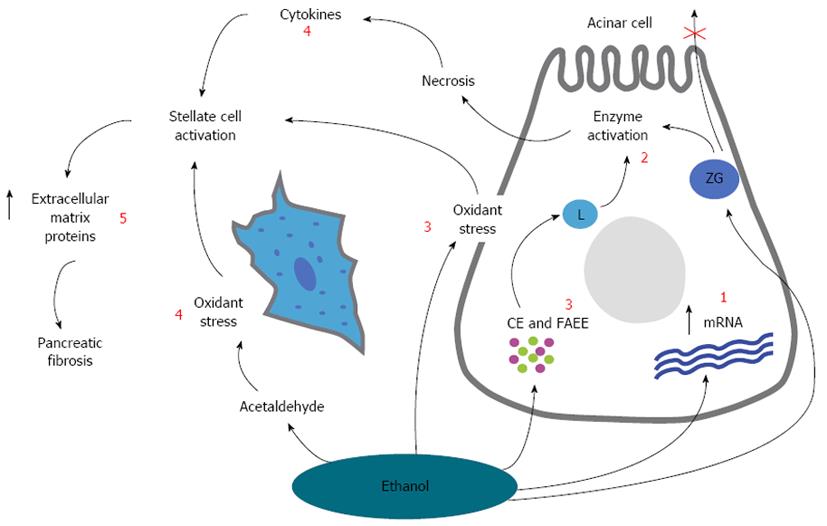Copyright
©2013 Baishideng Publishing Group Co.
World J Gastroenterol. Nov 14, 2013; 19(42): 7231-7240
Published online Nov 14, 2013. doi: 10.3748/wjg.v19.i42.7231
Published online Nov 14, 2013. doi: 10.3748/wjg.v19.i42.7231
Figure 2 A schematic overview showing the overall hypothesis for the pathogenesis of alcoholic chronic pancreatitis.
The effect of ethanol and its metabolites on the subcellular organelles include increased digestive and lysosomal enzyme content [due to increased synthesis (increased mRNA) and impaired secretion (1)] and destabilization of lysosomes (L) (2) and zymogen granules (ZG) [mediated by oxidant stress, cholesteryl esters (CE) and fatty acid ethyl esters (FAEE) (3)]. These changes will make the cell more sensitive to trigger factors and in the presence of appropriate trigger factors, overt acinar cell injury is initiated (alcoholic acute pancreatitis). Pancreatic stellate cells are activated by cytokines during alcohol-induced necroinflammation, or directly by ethanol via its metabolism to acetaldehyde and the subsequent generation of oxidant stress (4). Activated pancreatic stellate cell then increases the synthesis of extracellular matrix proteins leading to pancreatic fibrosis. Modified from Vonlaufen et al[84] (5).
- Citation: Brock C, Nielsen LM, Lelic D, Drewes AM. Pathophysiology of chronic pancreatitis. World J Gastroenterol 2013; 19(42): 7231-7240
- URL: https://www.wjgnet.com/1007-9327/full/v19/i42/7231.htm
- DOI: https://dx.doi.org/10.3748/wjg.v19.i42.7231









